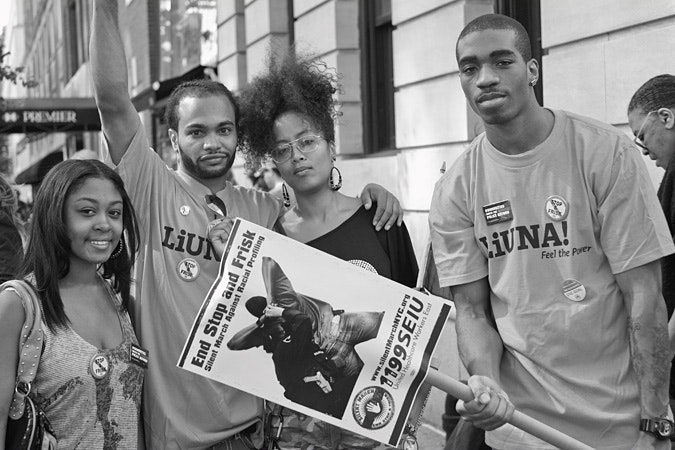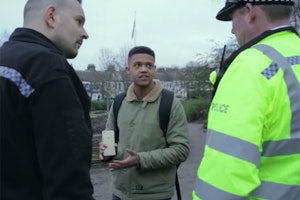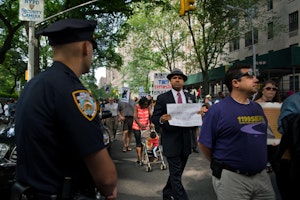New Yorkers March Silently for Justice
By Terrance Pitts

This past Father’s Day, thousands of New Yorkers from all walks of life came together in a Silent March to show solidarity against NYPD’s stop-and-frisk policy. The March began at 110th Street and 5th Avenue and ended in front of the mayor’s residence on the Upper East Side. The event was organized by the NAACP, the National Action Network and 1199 SEIU United Health Workers East with the support of faith-based coalitions and many other advocacy groups, such as the New York Civil Liberties Union, the Center for Constitutional Rights, the National Network for Arab American Communities, Latino Justice, and Communities United for Police Reform. The groups are asking Mayor Bloomberg and Police Commission Raymond Kelly for greater police accountability—and an end to a policing tactic that disproportionately impacts black and Latino communities with little proven benefit. In 2011, NYPD stopped nearly 700,000 individuals, most of them were black or Latino.
Although seasoned and iconic activists like Rev. Al Sharpton and Marian Wright Edelman were positioned at the head of the march carrying a banner denouncing the abusive practice of stop-and-frisk, New Yorkers from all walks of life came together in a veritable multi-racial rainbow to make the event a success. News accounts for the march estimate the number of participants from the thousands to the tens of thousands. Entire families marched together as the old walked with the young. Feminists and LGBT community made their presence known—along with traditional civil rights and faith-based groups. Muslim, Christian and Jewish leaders walked side-by-side, demonstrating the solidarity of diverse religious communities against NYPD’s practice of stop-and-frisk.
During the planning phases of the March, many youth groups resisted the notion that they would have to remain silent during the event. They felt silenced enough, they said. Yet their capitulation to take part, and even play a key role in the Silent March as organizers, made the event even more powerful. Marching silently for justice did not mean that the participants lacked voice or agency. To the contrary, the silence and relative calm was reminiscent of the non-violent protest tactics of the Civil Rights Movement, and of Dr. Martin Luther King, Jr. The Silent March sent several strong messages to the powers that be in New York City: 1) there is strength in unity; 2) the problem of discriminatory policing impacts New Yorkers from all walks of life; and 3) there is a powerful movement for justice and police accountability growing in New York City—a movement that cannot be ignored even in its silence.
Until January 2016, Terrance Pitts was a program officer for the Justice Fund at the Open Society Foundations.

